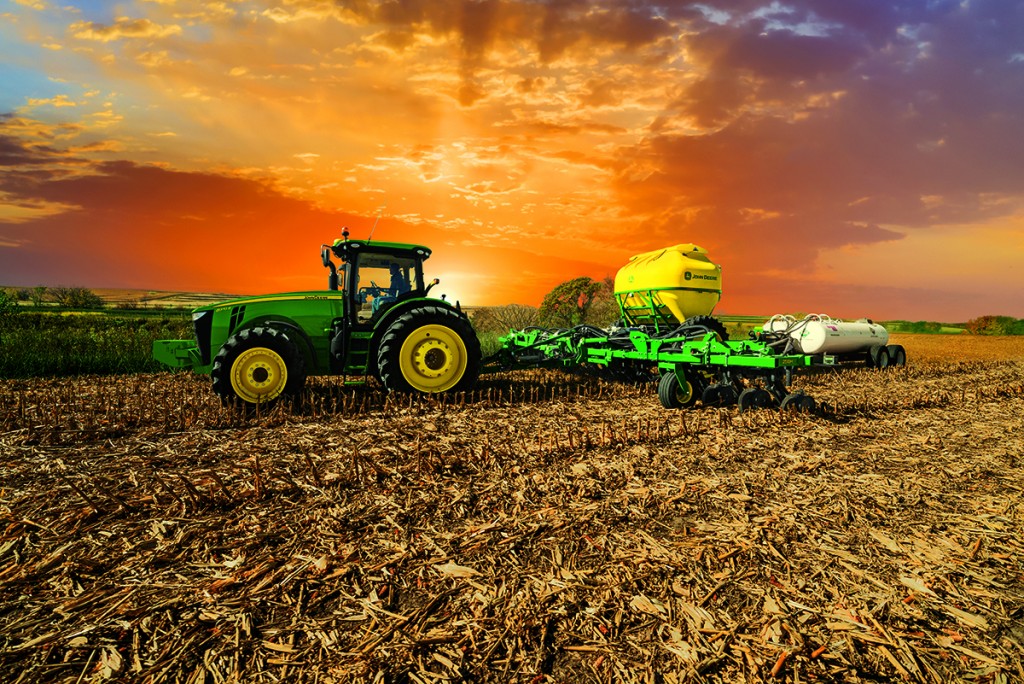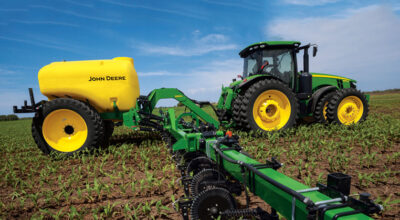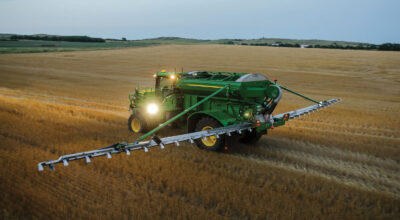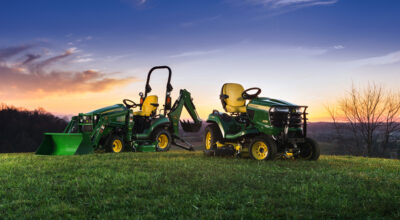Drawn dry spreaders, self-propelled sprayers, and nutrient applicators are all critical pieces of equipment to maximize crop farming efficiency.

But, with a number of model options to choose from, deciding on the right piece of nutrient application equipment for your operation could be a difficult process. With this in mind, we’ve outline some of the key questions to ask yourself before making a selection from John Deere’s available models.
What form of fertilizer will you be applying?
To begin the process of narrowing down Deere’s nutrient application models, think about what type of fertilizer you will be applying to your crops (dry, liquid, gas, ag lime). If you’re looking to spread primarily dry fertilizer, an option like the DN345 Drawn Dry Spreader might be best. On the flip side, if you are going to be utilizing liquid fertilizer, a liquid fertilizer applicator like the 2510L might be your best choice. Heading to the dealership with an answer to this question will expedite the matching process.
When do you plan to apply the nutrients?
After you’ve identified what type of fertilizer you will be primarily spreading, it’s then a good idea to think about timing of application. If you’re looking to apply in the middle of the growing season, you will want to eliminate strip-till applicators and drawn dry spreaders and lean towards self-propelled sprayers and other nutrient applicator options. Deere’s self-propelled sprayers fulfill a wide range of capacity, tank size, boom width, power and loading requirements.
How do you wish to place the nutrients?
Next, you will want to ask yourself how you will be applying the nutrients to your field. If you’re looking to spread fertilizer on a surface level, you will find yourself selecting from Deere’s drawn dry spreader or self-propelled sprayer models. If you’re looking to inject the fertilizer into the soil, Deere has a number of nutrient applicator models that would be a good fit, like the 2510C.
What type of equipment do you prefer?
If you own a John Deere tractor and are simply looking for a piece of nutrient application equipment to attach to it, you will find yourself selecting from the nutrient applicator and drawn dry spreader options. However, if you’re looking for a self-propelled unit that’s designed specifically to conquer spraying jobs, there are a number of self-propelled sprayer models to choose from as well. Deere’s sprayer boom widths reach up to 120 ft.
Is surface disturbance acceptable for your operation?
Lastly, be sure to consider how much disturbance your crop can tolerate. Some of Deere’s nutrient application products are specially designed to reduce disturbance, while others, like the 2510S Strip-Till Medium Residue Applicator, penetrate the surface to maximize nutrient placement efficiency.
Final Thoughts
We hope these questions will help you select the nutrient application equipment that’s best suited for your needs. If you enjoyed this post or want to read others, feel free to connect with us on Facebook, or Twitter!


